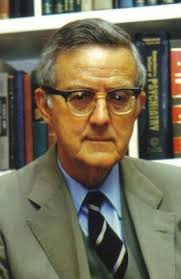“Reincarnation, at least as I conceive it, does not nullify what we know about evolution and genetics. It suggests, however, that there may be two streams of evolution — the biological one and a personal one — and that during terrestrial lives these streams may interact.”—Ian Stevenson, Children Who Remember Previous Lives
There are only a handful of universal truths, such as the value of pi in three-dimensional space, beauty being in the eye of the beholder, and that any liquor store with the word “discount” in its name will be the most expensive one for miles. Just about everything else is up for debate. You can’t even correctly say that water boils at 100⁰ Celsius because even that’s only true at sea level on our planet.
Despite knowing all of this, many scientists are only too happy to expound on what is possible and what is impossible. They tend to act as if their inability to disprove any notions that they find objectionable is merely a formality. Common sense and an attitude of complete scientific materialism should be enough to tell us what is real and what is mere fantasy in such cases.
 One of the biggest burrs in their collective saddle blanket is the persistent notion that life could possibly be anything other than an enormously complicated biological accident. So when Ian Stevenson published Twenty Cases Suggestive of Reincarnation in 1966, it was a real kick in the pants for scientific rationalists. He was a highly regarded faculty member at a respected institution of higher learning. He was supposed to have been one of their own. He shouldn’t have been seriously studying such a blasphemous concept as reincarnation. That tacitly reinforces the ridiculous superstition that man (and even woman) has a soul. What was he thinking? Lousy traitor.
One of the biggest burrs in their collective saddle blanket is the persistent notion that life could possibly be anything other than an enormously complicated biological accident. So when Ian Stevenson published Twenty Cases Suggestive of Reincarnation in 1966, it was a real kick in the pants for scientific rationalists. He was a highly regarded faculty member at a respected institution of higher learning. He was supposed to have been one of their own. He shouldn’t have been seriously studying such a blasphemous concept as reincarnation. That tacitly reinforces the ridiculous superstition that man (and even woman) has a soul. What was he thinking? Lousy traitor.
Actually, being a professor of psychiatry at the University of Virginia School of Medicine, he was careful not to use terminology that implied any sort of religious or mystical beliefs. He preferred to say that certain traits, abilities, illnesses, phobias, preferences and even physical injuries were able to survive death and later manifest themselves in another body, the last one sometimes appearing as birthmarks that could be verified. He stopped short of claiming that he was able to explain the process by which this happens, i.e., humans possess a soul which inhabits one body and then moves on to another after death. He almost certainly believed that this was the case, but in science you can’t make claims like that unless you have some evidence to back it up. So far, neither he nor anyone else that I’m aware of has been able to do that, at least not to the satisfaction of the mainstream scientific community.
Stevenson’s early writings on reincarnation quickly caught the attention of various persons interested in the subject, most notably Chester Carlson, the inventor of xerography. Based on the potential for further advancement of knowledge in this area, Carlson decided to provide funding for the Division of Perceptual Studies to be formed within the psychiatric department of the Virginia medical school to study various paranormal subjects. Despite opposition from some within the university, the establishment of the division was approved, and Stevenson became the first Carlson Professor of Psychiatry in 1967. Universities just can’t so no to million dollar donations. Neither can I, by the way.
His initial interest in reincarnation was sparked by the inability of environmental or biological factors to explain some aspects of the personality. He surmised that there had to be an additional factor at work, and reincarnation seemed to be the one that made the most sense. Having published a few magazine articles on psychosomatic illnesses and ESP in the late 1950s, he was already dangerously close to becoming a scientific heretic, so I suppose that it shouldn’t be too surprising that he would have been open to the concept of reincarnation. Over the years, Stevenson was to write 14 books and around 300 papers on the subject before his death in 2007. In all, he investigated about 3,000 cases of children who claimed spontaneous memories of a previous life, which is nowhere near as rare as some might suspect. Other researchers have conducted informal, primarily anecdotal, studies and found that it happens fairly often, but parents just tend to dismiss such things as childhood fantasies unless there’s a good reason to suspect otherwise. Even then, it’s entirely possible that most of them choose not to talk about it. No one wants their kid to be seen as a freak.
I have no intention of going over all 3,000 cases that he recorded, but feel free to do that on your own if you have that kind of time on your hands. Instead, I’ll just go over some of the similarities that he noted and then hit a couple of high points from his research.
Some common features that Stevenson was able to identify in these instances of spontaneous past-life memories include that many of these children (61%) recalled lives that ended violently. Quite a few others remembered dying from a sudden illness or accident, so it would seem that an unexpected death is more likely to imprint itself on the memory of the next incarnation. In almost every case, these memories appeared between the ages of two and four and were gone by age five to eight. (There may be a connection here to the age at which children began to gain the ability to store long-term memories and the age at which this becomes more crystallized, but that research is well beyond the scope of this article.) In multiple cases, Stevenson was able to verify that the person that the child claimed to have been in their last life did exist. More importantly, he was also sometimes able to confirm details about that person’s life as reported by the child, often including information contained in official government records and even autopsy reports that confirm the stated cause of death.
In Reincarnation and Biology, Stevenson described some 200 cases of children with past-life recall and birthmarks or birth defects that seemed related to experiences from that life. One boy who was born with only short stubs for fingers on one hand remembered losing his fingers in an accident. Other children who recalled suffering various wounds in their previous incarnation had unusual skin abnormalities in the area corresponding to the injuries. Stevenson points out that these are not the usual sorts of small splotches of discoloration that almost everyone has a few of here and there. These markings are often oddly colored and either scooped or raised areas of skin, more similar to actual scars than birthmarks. In more than 40 cases, Stevenson was able to confirm the accuracy of the locations of the markings with wounds on the deceased person named by the child as their previous selves through post-mortems.
Perhaps no case is more impressive than that of a boy in India named Hanumant, who remembered his past life as a farmer named Maha Ram. The farmer had lived in the same village and been murdered in 1954. He had been killed by a shotgun blast at close range, and markings on Hanumant’s abdomen corresponded closely to the locations of the pellet wounds as recorded in the post-mortem examination.
Hanumant had always maintained that these birthmarks were from where he was shot as Maha Ram, and they sometimes caused the boy pain up until he was 14, at which point this stopped. Hanumant first began speaking of his life as Maha Ram at three and continued to do so until the age of five or six. During this time, Hanumant frequently visited Maha Ram’s mother, who had also become convinced that the boy was the reincarnation of her son based on his knowledge of the man’s life. Others in the family, including Maha Ram’s eldest son, rejected his claims, in the son’s case apparently because Hanumant failed to recognize him. However, Stevenson answers this by pointing out that it is not unusual for subjects to have detailed knowledge of some aspects of the dead person’s life while having no memory of other, equally significant facts. Since the mechanism responsible for spontaneous past-life recall is unknown, it is currently not possible to determine why this would be the case.
A more typical case of those reported by Stevenson is that of a boy named Imad, whom Stevenson met in Lebanon in 1964. Imad was six at the time and lived in the village of Kornayel, a few miles east of Beirut. At the age of two, the boy had begun talking about his previous life as a man named Bouhamzy, who had lived in the town of Khriby, just 20 miles away. Imad was able to describe Bouhamzy’s house and relatives in detail, but no one in the family ever bothered to check any of this out. But Stevenson did, and when he took Imad to meet Bouhamzy’s family, the boy deeply impressed them with his detailed knowledge of them as well as his speech and mannerisms, which reminded them of Bouhamzy. Of the 57 details that Imad told Stevenson about Bouhamzy’s life, 51 of them proved to be correct.
A more atypical case that Stevenson investigated was that of a boy who was in such a hurry to be reborn that he didn’t bother to wait around for that to happen. He just snatched a body that wasn’t being used anymore instead.
In India in 1954, a three-year-old boy named Jasbir Lal Jat died of smallpox. The weird/good news is that he got better. The weird/weirder news is that after he came back to life, he was a different person. His personality was completely unlike Jasbir’s, and he insisted that his name was Sobha Ram. He said that he was from the nearby town of Vehedi and that he had died from falling off of a cart at about the same time as Jasbir. The family dismissed his claims until one day when he saw a woman on the street who he identified as being his aunt. He was taken to visit the rest of the woman’s family in Vehedi, and he knew so much about them that it didn’t take long for them to become convinced that he was Sobha Ram.
You can probably guess how Stevenson’s work was received by the scientific establishment. The man who had somehow managed to ascend to the position of head of the psychiatry department in the medical school of a major university had suddenly become a gullible dupe who had succumbed to his own fantasies and wishful thinking. Sadly, this had allowed him to be led on by the lies and delusions of third world primitives who all intelligent people (i.e., American intellectuals) know are just a bunch of superstitious fools. I’m sure that we can all agree that there are none so whimsical and out of touch with reality as those for whom everyday existence is a constant struggle. What a fanciful bunch the impoverished are as they toil to eke out a living.
But all sarcasm aside…
Much like the criticisms and accusations leveled against Robert Temple, many of those who attack Stevenson’s work rely primarily on hypothetical possibilities, opinions, and conclusions being drawn regarding the veracity of his methods by people who were not there. One of their favorite targets is alleged cases of xenoglossy – instances of people speaking a language with which they have had no previous exposure. Personally, I have no idea how much stock to put into either side of this argument, but it’s hardly the foundation on which the case for reincarnation rests. Many of the cases Stevenson investigated took place in countries where he did not speak the local language, and so he had no choice but to rely on interpreters in order to communicate with the subjects. Likewise, the previously unknown languages being spoken by the subjects were also unknown to Stevenson (or the interpreter) in most cases. Hence, if there was going to be a weak link in his case studies, the language barrier was bound to be it, and smart debunkers always go for the weakest link. What good is it to attack the cases where the facts are almost impossible to refute? You’ll starve to death if you’re always trying to take down the biggest yak in the herd.
Stevenson’s supporters are not blind to the fact that the critics focus in on some of the weaker cases while ignoring ones that are harder to explain away, and then use these “soft” cases to demonstrate the fallacy of all of his research. They point out that this is the logical equivalent of asserting that since some $20 bills can be proven to be counterfeit, then it follows that all $20 bills must be counterfeit as well. For them, his research and conclusions must be faulty. How else could they have yielded results in support of something that they know, a priori, is an impossibility, even if some of us think that they’re talking out of their a posterioris? It cannot be ignored that many atheists are every bit as dogmatic about their beliefs as any pulpit-pounding Evangelical minister. While it may be true that at least some of Stevenson’s conclusions were affected by his beliefs, it is a virtual certainty that the same is true of his detractors.
 In the interest of adhering to equal time requirements (which don’t actually apply here), I’ve decided to put forth the opinions of two non-scientists who actually worked with Stevenson. It probably makes no difference, as most of you have probably already decided which side of the fence you’re on, but what the hell.
In the interest of adhering to equal time requirements (which don’t actually apply here), I’ve decided to put forth the opinions of two non-scientists who actually worked with Stevenson. It probably makes no difference, as most of you have probably already decided which side of the fence you’re on, but what the hell.
According to Champe Ransom, an attorney that Stevenson hired as an assistant in the 1970s, Stevenson asked children leading questions and filled in details not given in their stories. He also claimed that Stevenson did not spend enough time interviewing subjects and that too much time had passed between when the memories of the past life originated and when interviews took place. He further claims that out of all of the cases that he reviewed, less than 1% of Stevenson’s interviews took place before the family of the deceased and the family of the “reincarnated” child had met. He also had problems with the way that Stevenson presented these cases, all of which basically boils down to Ransom accusing him of confirmation bias.
On the other hand, Tom Shroder, a Washington Post editor who wrote the book Old Souls based on his experiences with Stevenson, came away with an entirely different perspective on his work. Shroder accompanied Stevenson on trips to India and Lebanon to observe and participate in interviews with subjects and was quite impressed with what he heard. According to Shroder, the only way to discount these people’s stories and the evidence to support them would be to propose a massive conspiracy involving numerous families from multiple communities and countries all working together with no apparent connection between them or motive for doing so.
So there you have it: two very different opinions from an attorney and a newspaper man, both of whom worked with Stevenson in one capacity or another and came away with own their assessments of his work. Who you tend to find more believable is, of course, entirely up to you.
However, just because I have some confirmation biases of my own, I’m going to point out that Ransom’s report criticizing Stevenson was never published or mentioned anywhere in print other than in two books written to discredit Stevenson’s work by his arch-critic, philosophy professor Paul Edwards. In an ironic twist, Edwards was a fan of the controversial psychiatrist Wilhelm Reich in his youth. Reich died in federal prison after his lab was raided by the FDA, whose agents smashed his equipment and threw his research notes into an incinerator. It’s interesting that Edwards could be an admirer of one persecuted heretic and then turn around and be the chief persecutor of another. I guess reincarnation was just beyond the pale for him. Perhaps he was also unaware that Reich himself wrote in his book The Murder of Christ that the slanderer and the assassin are similar psychological types – both seeking to attain notoriety by taking down someone whose status they simultaneously covet and resent.
In an interview he did for The New York Times in 1999, the interviewer (David Wallis) mentioned that Stevenson was fond of saying that science changes one funeral at a time. Although neither of them specifically mentioned it, this was doubtless a reference to The Structure of Scientific Revolutions by Thomas Kuhn published in 1962, which was also a controversial piece of writing. In the book, Kuhn pointed out that science advances in periodic leaps rather than in a linear, logical progression as most might assume. Kuhn gives a number of factors that account for these periods of rapid advancement, but they basically all boil down to one thing: science makes rapid progress about once every 40 years because that’s how long it takes for old scientists to die off and new scientists to take their place.
It goes like this: Young scientists come out of grad school full of new theories and perspectives about what they’ve learned in college, and these innovative thoughts and ideas are quickly squelched by the old guard of the scientific establishment who don’t want to hear this nonsense from a bunch of know-nothing young pups who haven’t even had a paper published yet. So it takes about 40 years for these old farts to die off or retire before these new ideas are really considered and proved or disproved and some real advances take place. Of course by then, the former young punks are now the old guard themselves and it will be another 40 years before they die away and the next generation of scientists will get a fair shot at making their mark on the world of scientific knowledge.
 So there’s nothing esoteric or astrological or numerological about these leaps forward. It all has to do with people being too set in their ways and refusing to be open-minded about new concepts. We would all like to think that scientists aren’t as hardheaded as our parents are about embracing new ideas, but that just isn’t the way that it is in most cases. As great as Einstein was, he never did accept quantum physics, even as all of his younger colleagues were devoting their entire careers to it. It just goes to show that stodgy inflexibility can happen to any of us if we aren’t careful.
So there’s nothing esoteric or astrological or numerological about these leaps forward. It all has to do with people being too set in their ways and refusing to be open-minded about new concepts. We would all like to think that scientists aren’t as hardheaded as our parents are about embracing new ideas, but that just isn’t the way that it is in most cases. As great as Einstein was, he never did accept quantum physics, even as all of his younger colleagues were devoting their entire careers to it. It just goes to show that stodgy inflexibility can happen to any of us if we aren’t careful.
Dr. Stevenson was not the first intelligent, educated person to become convinced of the reality of reincarnation. Nor was he the first person to hold a respected position in the world of academia to advance a belief in a controversial and sometimes forbidden subject. Nevertheless, he does seem to have kicked open a door and made it much easier for other medical professionals to follow him through it with stories of their own experiences involving evidence that the personality survives death. In the decades that followed the publication of Twenty Cases Suggestive of Reincarnation, there was a flurry of interest in the subject and books being published by doctors and mental health professionals that continues to this day. Nice going, Doc. You were a real trailblazer.




